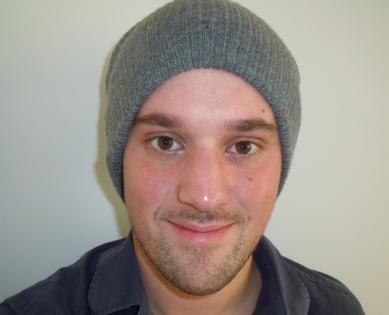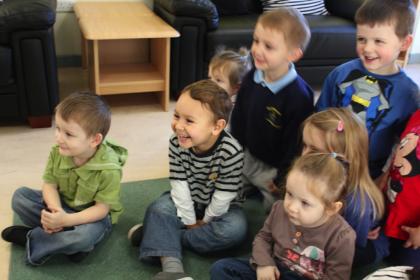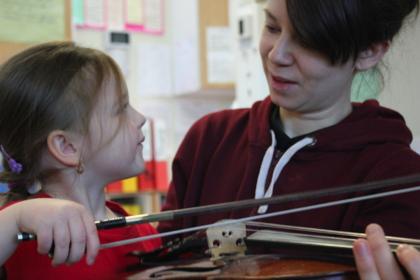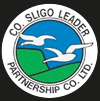
Matt Addicott is a Glasgow based theatre maker and director working preliminary in the field of Early Years Arts. He is currently working on the PLAYTIME project in Glasgow.
Playtime strikes me as an example of a project which came to be through long term relationships build between artists, organisations and the community and I was interested to hear more about it.Project outlines
"Playtime is a fifteen week programme of workshops, performances and CPD for the children, staff and parents of Barlanark Family Learning Centre and Helenslea Nursery."
Over the course of the project Matt will be inviting Barlanark and Helenslea to meet and play with a variety of art forms and artists before asking the staff and placement students at both centres to collaborate with him in a creative process that culminates in a celebration for all the children and adults that have engaged with the programme.
The project is led by Starcatchers Associate Artist Matt Addicott with support from Starcatchers, Platform and John Wheatley College and is funded by Glasgow City CHP North East Sector." (Taken from Starcatchers website)
The Playtime Project is funded by the NHS Health Improvement Team that focuses on the east of Glasgow. Matt is the creative lead on the project and it receives strategic and administrative support from Platform and Starcatchers.
Matt about the project
- How did Playtime come to be?
The NHS Health Improvement Team for Glasgow East has been very supportive of Starcatchers, providing funding that supported my initial residency with Platform between November 2009 and March 2011. Their support has continued despite the residency coming to an end and this is the second project post-residency that they have supported me to work on.
At the beginning of the project Platform, Starcatchers and myself worked with members of the NHS Health Improvement Team to create a logic model that set out our short, medium and long term aims - I then drafted a fifteen week proposal of activity that I believed would go some way to realising these shared ambitions.
- What is your role in the project?
I am the lead artist on the project - delivering workshops, liaising with all partners and managing the other artists working on the project.

- Which are the projects aims?
Playtime aims to increase awareness of the creative opportunities available to the adults and children participating, improve the level of confidence that people have for engaging with art, gather information about the time and space currently devoted in both centres to creative activities and find a sustainable way to continue supporting the local community to engage with quality artistic experiences.
- Do you also have a personal aim on what you’d like to achieve within the project?
I am very keen that creative activity for early years audiences continues to be delivered in the east of Glasgow and that Starcatchers continue to develop work and build upon the relationships and links formed over the last three years.
- You work with a number of artists- in why?
My practise benefits from being challenged and interrogated by other artists, I enjoy meeting and working with different artists and actively look for opportunities to play - particularly outside of a rehearsal process that is heading towards a production at its end.
- Is it not confusing or overwhelming for the groups to be confronted with so many different characters, approaches, art forms?
I don’t think so - we have been very clear with the nurseries that different artists would be involved with the project from the outset. Although there are other artists working on the project I am always keen to ensure that I am present for the sessions to be a familiar face and point of contact for children and staff. For the last three weeks my colleague Geraldine has been acting as lead artist whilst I am fulltime rehearsals with another show but Geraldine had already been introduced to the centres earlier in the project and so when she took over it was not as if a stranger was picking up the reins.
- There s a blog about Playtime where you and your colleagues share insight. Which other forms of documentation do you use, and which role does documentation play within the project?
Video, photographs, drawings and writing - the Playtime Project is essentially one big creative process and the documentation reminds us where we’ve been and informs the choices we make going forward.
Eventually some of this material will form part of the evaluation of the project too.
- There is an element of teaching childcare students. I’m interested to hear if being taught by artists always is part of their training.
Since 2010 Starcatchers have been working with John Wheatley College’s NC and HNC Childcare students to introduce performing arts practise to the students, improve their awareness of the work that is out there and build their confidence and skills as facilitators of creative activity. We hope to continue this work but, as with so much, this does depend on finding the funding for it to happen.
As far as I am aware the childcare students were not engaging with artists before Starcatchers began working with them.
- What can you as an artist teach the students? Any feedback yet?
From my own experience I think that the students seem to enjoy the opportunity to see how creative projects are realised, the thoughts behind them and the craft involved with realising them. These insights are empowering for some of them and I hope go some way to encouraging them to take more risks in their own practice.
There is a little evidence of some of the exchanges that are taking place on the Playtime blog too.
-Anything you find particularly challenging within this project?
Generally it’s a case of so far so good!

- You ve been working on quite a range of Early Years Arts projects. Give us an example of something that becomes easier with time & experience...
I think it has definitely got easier for me to take risks and experiment with nurseries and childcare centres - mainly because they might have seen something that Starcatchers has made or I can show them photographs and films of previous projects - for them it is comforting to see that other schools, groups etc have engaged with this kind of work and got something from doing so.
My confidence to be responsive has also improved over time - by which I mean the state of mind that I feel important to inhabit when bringing your practise into early years settings. Whilst still important to present the work you have prepared - all too often I feel that a responsive state of mind allows you to observe, react and respond to your audience - enabling the work to move somewhere else.
- What do the children get out of the project- short term and long term wise?
Enjoyment, fun, stories, music and confidence to name but a few in the short term and in the long term - who knows! I like to think that they will be interested and confident about engaging with art and getting creative in the long term but beyond that don’t feel it is my place to say.
- Is there any particular theme or content you bring into the process of creating a final event/ performance, or will it be shaped throughout the process?
Different each time and will be shaped and developed in collaboration with the children, members of staff, students and artists I work with during the project. The over arching theme of the project is play - to share space and have as enjoyable and creative time as possible.
- Rewind for a few years: when did you first grow an interest in working in Early Years? Any initial experience?
I attended the first Starcatchers Symposium in 2007 at which I heard about some of the wonderful early years work already happening - speakers like Professor Colwyn Trevarthen and Peter Wynne-Wilson in particular. The impact that creative activity had on those that were experiencing it seemed really tangible and important. I found the event exciting and inspiring and my interest in developing early years work really began then.
- In a nutshell: What keeps you at it?
I think my desire to make sure that the relationships built up over the last three years are strengthened, combined with the amount of creative satisfaction I get from making the work is what keeps me going!
Thanks Matt!


No comments added